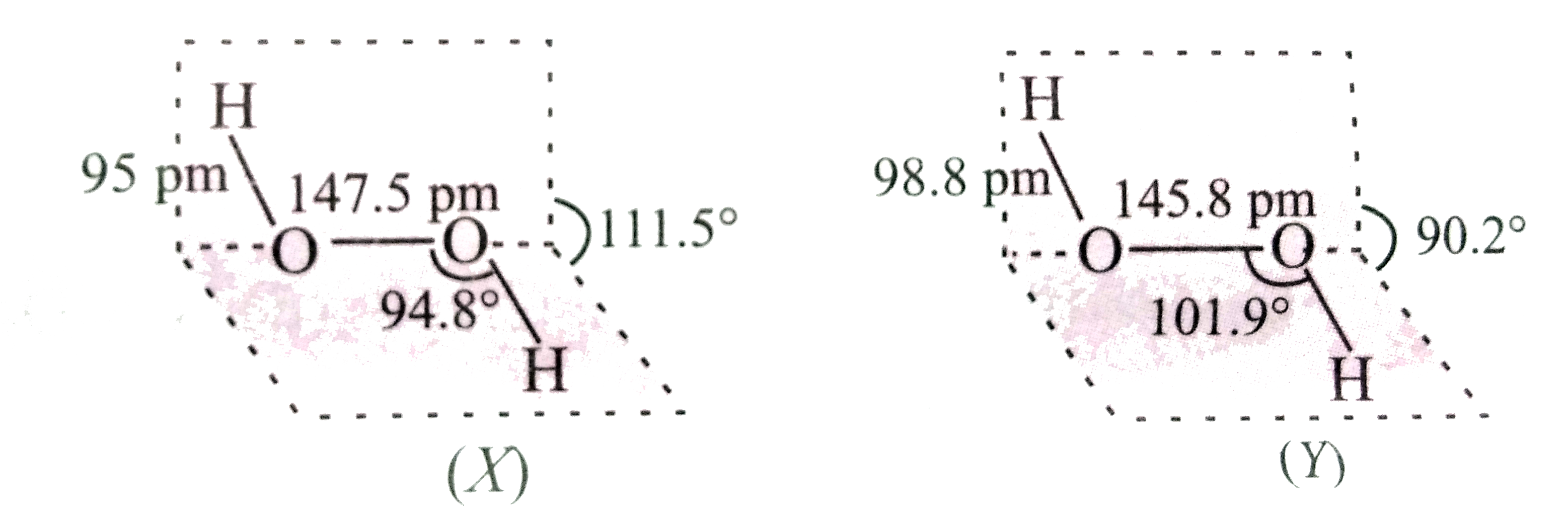Fenton's reagent is X+ H2O2. X combines readily with Y and H2O to form crystals of Mohrs salt. X can be made in laboratory from Kipp's waste is heated in the presence of O2 and water, Z is also produced along with X. the reaction of X with KMnO4 in the presence of H2SO4 also gives Z. Identify the correct match.
X=FeSO4
X=Fe2(SO4)3
Y=(NH4)2SO4
Z=FeSO4
The correct Answer is:A, C, D
To solve the question, we need to identify the compounds X, Y, and Z based on the clues provided in the question.
1. Identify Fenton's Reagent:
- The question states that Fenton's reagent is X + H₂O₂.
- Fenton's reagent is commonly known to be ferrous sulfate (FeSO₄) combined with hydrogen peroxide (H₂O₂).
- Therefore, we can conclude that X = FeSO₄.
Hint: Recall that Fenton's reagent is used in oxidation reactions and is typically made from ferrous sulfate.
2. Determine Y:
- The question mentions that X (FeSO₄) combines readily with Y and water to form crystals of Mohr's salt.
- Mohr's salt is known to be (NH₄)₂SO₄·FeSO₄·6H₂O, which indicates that Y must be ammonium sulfate (NH₄)₂SO₄.
- Thus, we conclude that Y = (NH₄)₂SO₄.
Hint: Mohr's salt is a double salt that contains both ammonium sulfate and ferrous sulfate.
3. Identify Z:
- The question states that X can be made in the laboratory from Kipp's waste when heated in the presence of O₂ and water, producing Z along with X.
- Kipp's waste typically contains iron pyrite (FeS₂). When heated with O₂ and water, it produces FeSO₄ (X) and iron(III) sulfate (Fe₂(SO₄)₃).
- Therefore, Z is identified as Z = Fe₂(SO₄)₃.
Hint: The reaction of iron pyrite with oxygen and water leads to the formation of iron sulfate compounds.
4. Reaction with KMnO₄:
- The question also mentions that the reaction of X (FeSO₄) with KMnO₄ in the presence of H₂SO₄ gives Z.
- The balanced reaction shows that FeSO₄ reacts with KMnO₄ to produce Fe₂(SO₄)₃ (Z) along with other products.
- This confirms our identification of Z as Z = Fe₂(SO₄)₃.
Hint: KMnO₄ is a strong oxidizing agent and can oxidize ferrous ions to ferric ions.
Final Identification:
- X = FeSO₄
- Y = (NH₄)₂SO₄
- Z = Fe₂(SO₄)₃
Thus, the correct matches are:
- X is equal to FeSO₄
- Y is equal to (NH₄)₂SO₄
- Z is equal to Fe₂(SO₄)₃
- The question states that Fenton's reagent is X + H₂O₂.
- Fenton's reagent is commonly known to be ferrous sulfate (FeSO₄) combined with hydrogen peroxide (H₂O₂).
- Therefore, we can conclude that X = FeSO₄.
- The question mentions that X (FeSO₄) combines readily with Y and water to form crystals of Mohr's salt.
- Mohr's salt is known to be (NH₄)₂SO₄·FeSO₄·6H₂O, which indicates that Y must be ammonium sulfate (NH₄)₂SO₄.
- Thus, we conclude that Y = (NH₄)₂SO₄.
- The question states that X can be made in the laboratory from Kipp's waste when heated in the presence of O₂ and water, producing Z along with X.
- Kipp's waste typically contains iron pyrite (FeS₂). When heated with O₂ and water, it produces FeSO₄ (X) and iron(III) sulfate (Fe₂(SO₄)₃).
- Therefore, Z is identified as Z = Fe₂(SO₄)₃.
- The question also mentions that the reaction of X (FeSO₄) with KMnO₄ in the presence of H₂SO₄ gives Z.
- The balanced reaction shows that FeSO₄ reacts with KMnO₄ to produce Fe₂(SO₄)₃ (Z) along with other products.
- This confirms our identification of Z as Z = Fe₂(SO₄)₃.
- X = FeSO₄
- Y = (NH₄)₂SO₄
- Z = Fe₂(SO₄)₃
- X is equal to FeSO₄
- Y is equal to (NH₄)₂SO₄
- Z is equal to Fe₂(SO₄)₃
Topper's Solved these Questions
- D & F-BLOCK ELEMENTS & THEIR IMPORTANT COMPOUNDS BOOK - RESONANCE ENGLISHCHAPTER - D & F-BLOCK ELEMENTS & THEIR IMPORTANT COMPOUNDS EXERCISE - One Integer Value Correct Type.
6 Videos
- D & F-BLOCK ELEMENTS & THEIR IMPORTANT COMPOUNDS BOOK - RESONANCE ENGLISHCHAPTER - D & F-BLOCK ELEMENTS & THEIR IMPORTANT COMPOUNDS EXERCISE - Paragraph
3 Videos
- D & F-BLOCK ELEMENTS & THEIR IMPORTANT COMPOUNDS BOOK - RESONANCE ENGLISHCHAPTER - D & F-BLOCK ELEMENTS & THEIR IMPORTANT COMPOUNDS EXERCISE - Single And Double Value Integer Type
5 Videos
- CHEMICAL EQUILIBRIUMBOOK - RESONANCE ENGLISHCHAPTER - CHEMICAL EQUILIBRIUMEXERCISE - Advanced Level Problems (Part-3)(Stage-5)
2 Videos
- GASEOUS STATEBOOK - RESONANCE ENGLISHCHAPTER - GASEOUS STATEEXERCISE - ORGANIC CHEMISTRY(Hydrocarbon)
18 Videos
Similar Questions
The reaction of aqueus KMnO4 with H2O2 in acidic conditions gives
View SolutionIn the manufacture of H2SO4 by contact process, the presence of As2O3 acts as :-
View Solution0.2 g of a sample of H2O2 required 10 mL of 1 N KMnO4 in a titration in the presence of H2SO4 Purity of H2O2 is :
View SolutionPhenol on treatment with CO2 in the presence of NaOH followed by acidification produces compound X as the major product. X on treatment with (CH3CO)2O in the presence of catalytic amount of H2SO4 produces
View SolutionA laboratory reagent imparts green colour to the flame. On heating with solid K2Cr2O7 and conc. H2SO4 it evolves a red gas. Identify the reagent .
View SolutionIdentify X and Y in the given reaction:
P4+H2SO4→X+Y+H2O
View SolutionIn the reaction KMnO4+H2SO4+H2C2O4→ products, Mn2+ ions act as:
View SolutionThe evolution of a red-brown gas on heating a salt with K2Cr2O7 and concentrated H2SO4 can arise from:
View SolutionTwo structures of H2O2 are drawn below. Identify the phases X and Y of H2O2.

View SolutionA compound X (having vinegar like smell) when treated with ethanol in the presence of the acid Z, gives a compound Y which has a fruity smell. The reaction is :
C2H5OH+XZ−−→Y+H2O
Identify Y and Z.
View Solution